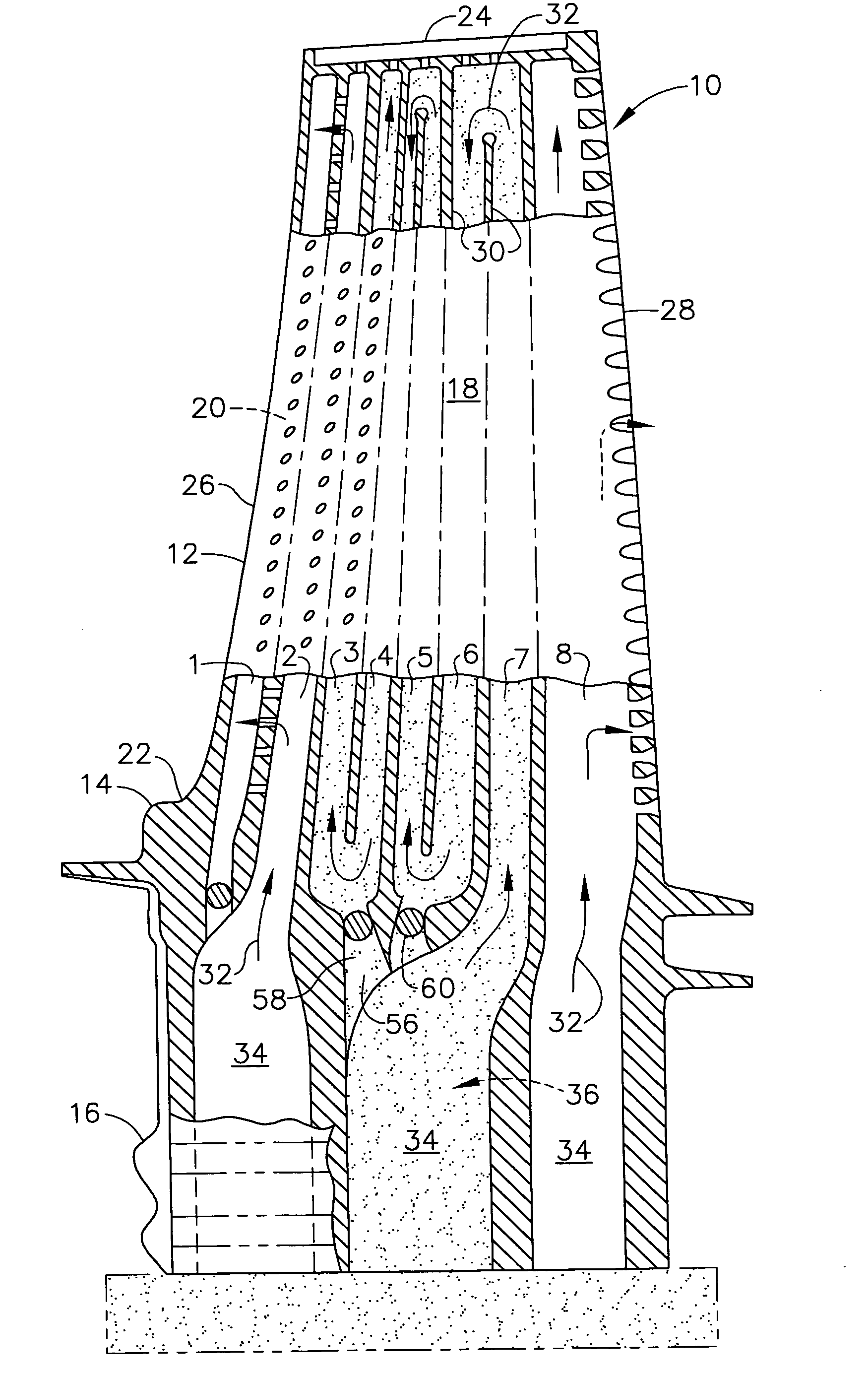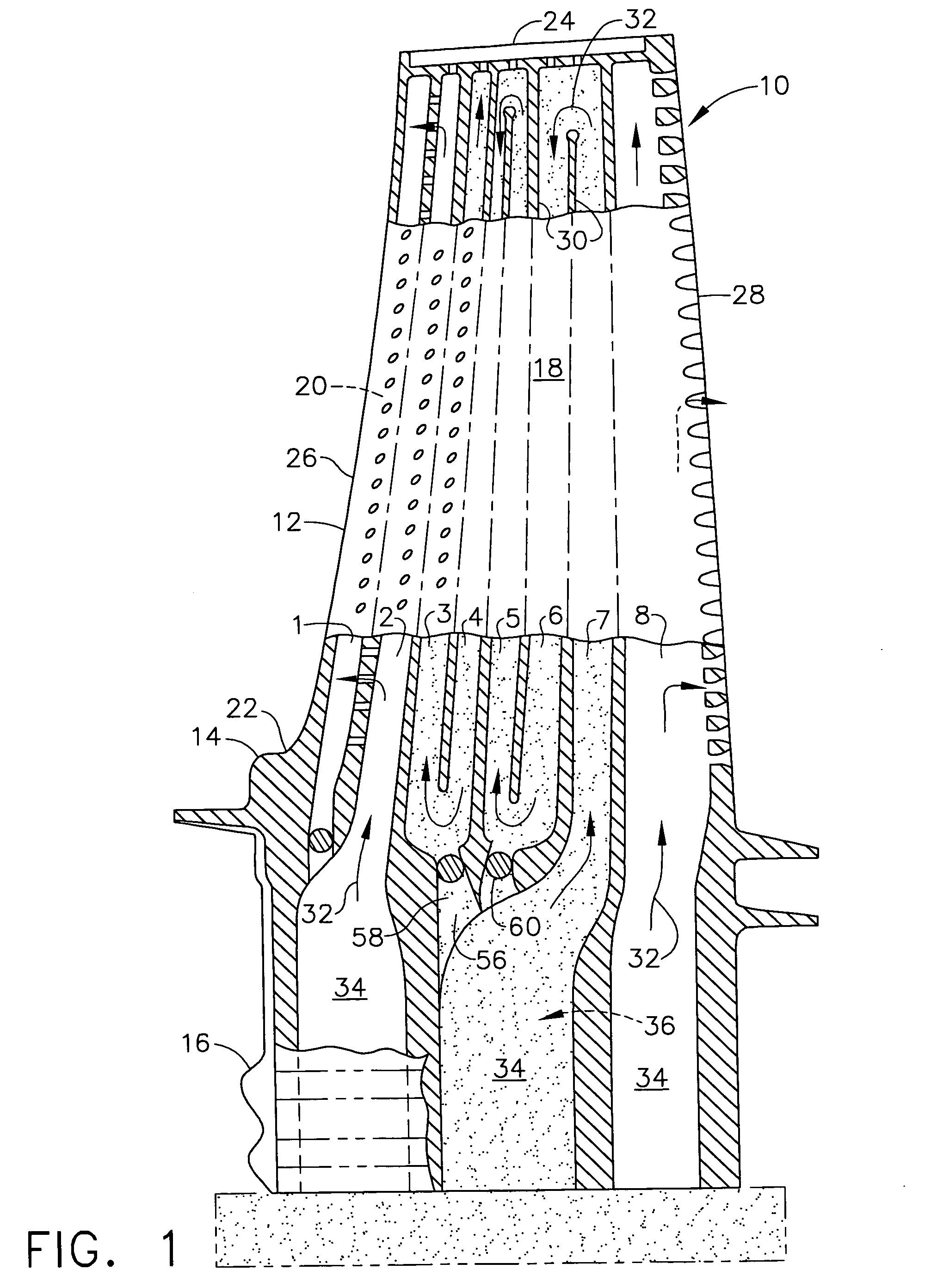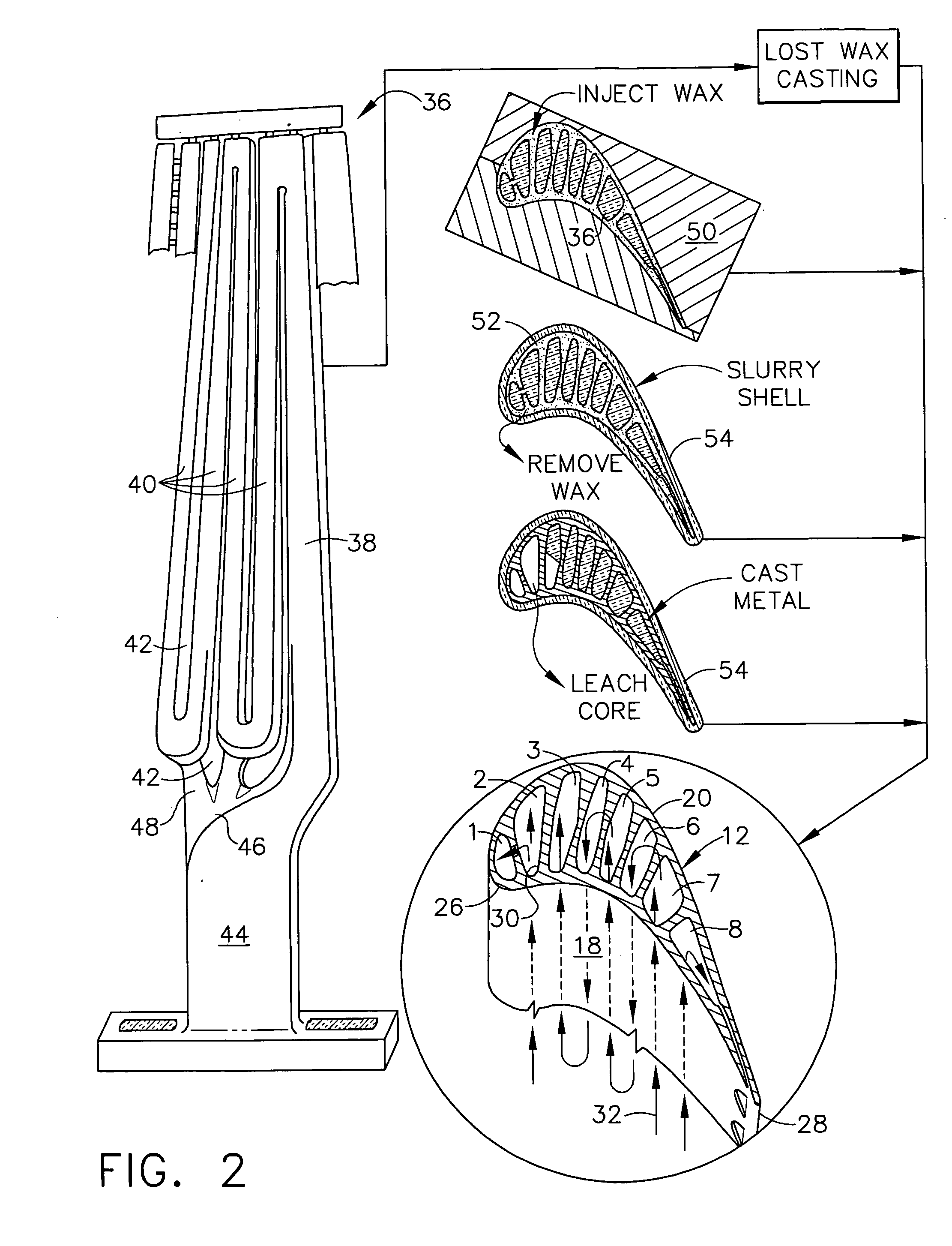Cluster bridged casting core
a technology of casting core and superalloy, which is applied in the direction of machines/engines, climate sustainability, waterborne vessels, etc., can solve the problems of slender legs being quite brittle, ceramic cores that must be specifically configured for the complex 3d turbine blades are yet more complex in configuration, and are subject to substantial centrifugal loads and corresponding stress
- Summary
- Abstract
- Description
- Claims
- Application Information
AI Technical Summary
Benefits of technology
Problems solved by technology
Method used
Image
Examples
Embodiment Construction
[0037]Illustrated in FIG. 1 is a first stage turbine rotor blade 10 configured for use in a gas turbine engine for extracting energy from hot combustion gases. The blade includes an airfoil 12 extending radially in span from an inner platform 14 which in turn is joined to a mounting dovetail 16 in a unitary assembly.
[0038]The platform 14 defines a portion of the radially inner boundary of the combustion gas flowpath in the engine and adjoins adjacent platforms in a full row of the turbine blades extending radially outwardly from the perimeter of a supporting rotor disk (not shown).
[0039]The dovetail 16 is an exemplary axial-entry dovetail with corresponding tangs or lobes configured for mounting in a complementary dovetail slot in the perimeter of the rotor disk which carries the centrifugal loads generated by the turbine blade during rotary operation of the disk during operation.
[0040]The airfoil 12 as illustrated in FIGS. 1 and 2 includes a generally concave pressure side 18 and a...
PUM
| Property | Measurement | Unit |
|---|---|---|
| area | aaaaa | aaaaa |
| elevation | aaaaa | aaaaa |
| perimeter | aaaaa | aaaaa |
Abstract
Description
Claims
Application Information
 Login to View More
Login to View More - R&D
- Intellectual Property
- Life Sciences
- Materials
- Tech Scout
- Unparalleled Data Quality
- Higher Quality Content
- 60% Fewer Hallucinations
Browse by: Latest US Patents, China's latest patents, Technical Efficacy Thesaurus, Application Domain, Technology Topic, Popular Technical Reports.
© 2025 PatSnap. All rights reserved.Legal|Privacy policy|Modern Slavery Act Transparency Statement|Sitemap|About US| Contact US: help@patsnap.com



